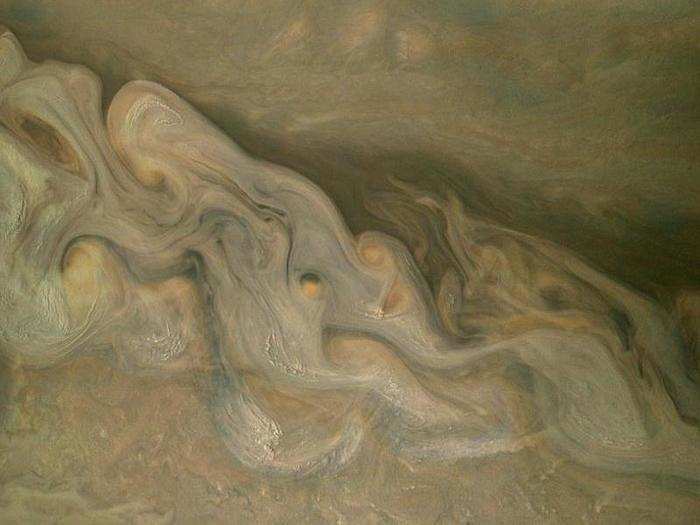- Home
- slideshows
- miscellaneous
- NASA's $1 billion mission to Jupiter may end this summer - here are the best images Juno has taken of the giant planet so far
NASA's $1 billion mission to Jupiter may end this summer - here are the best images Juno has taken of the giant planet so far
Jupiter is the largest planet in the solar system — so massive, in fact, that it doesn't technically orbit the sun.

The world is about 318 times as massive and 1,321 times as voluminous as Earth. Few spacecraft have ever visited it.
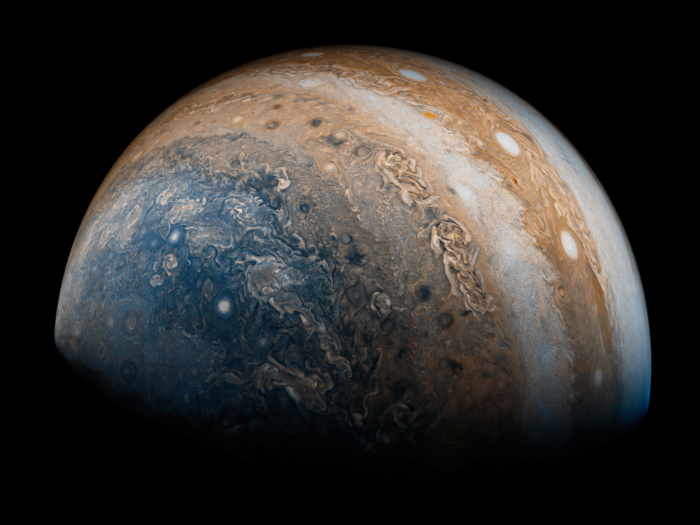
Source: Universe Today
Juno was the first probe to fly above and below Jupiter, photograph the planet's poles, and begin to unravel their mysteries.
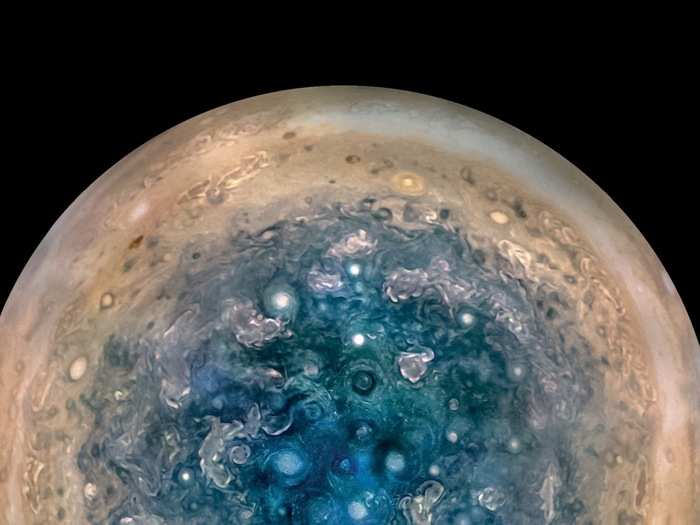
Source: Business Insider
The spacecraft soon began high-speed flybys of Jupiter, called perijoves. During each perijove, Juno takes astounding image sequences while it zooms over the north pole...
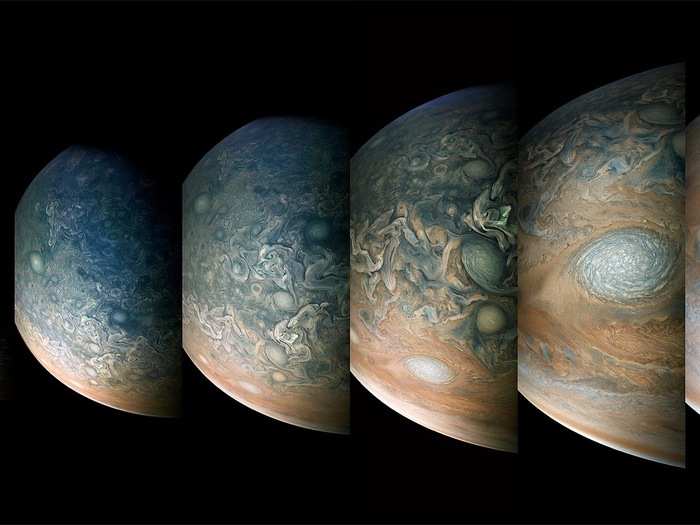
Source: Business Insider
...Shoots past the planet's equator at about 130,000 mph, and then exits over the south pole.
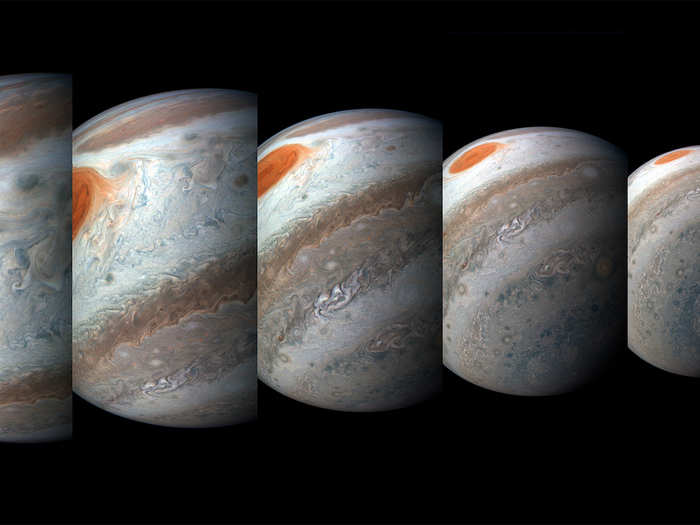
Source: Business Insider
"Jupiter is in constant flux so it's always a surprise to see what is going on in those cloudscapes," Seán Doran, a graphic artist and a prolific processor of JunoCam images, previously told Business Insider.
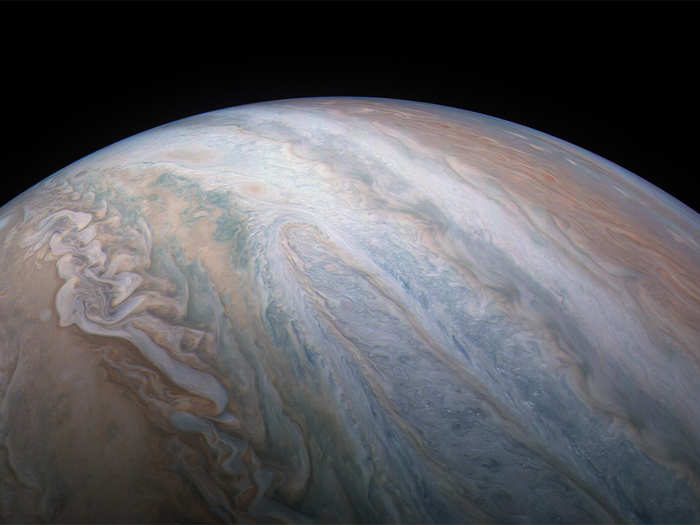
Source: Business Insider
Some users boost the saturation and contrast to pull out exquisite details of cloud bands.
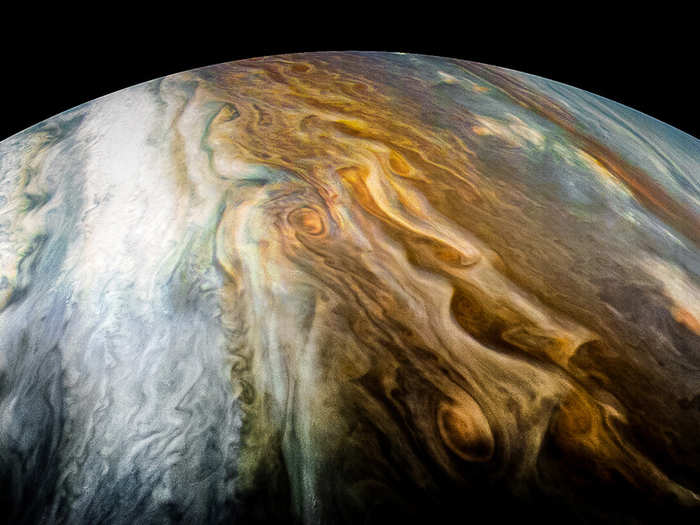
Source: Business Insider
But Jupiter's gargantuan Jovian storms and the wild patterns they leave in the clouds stand out with little help.
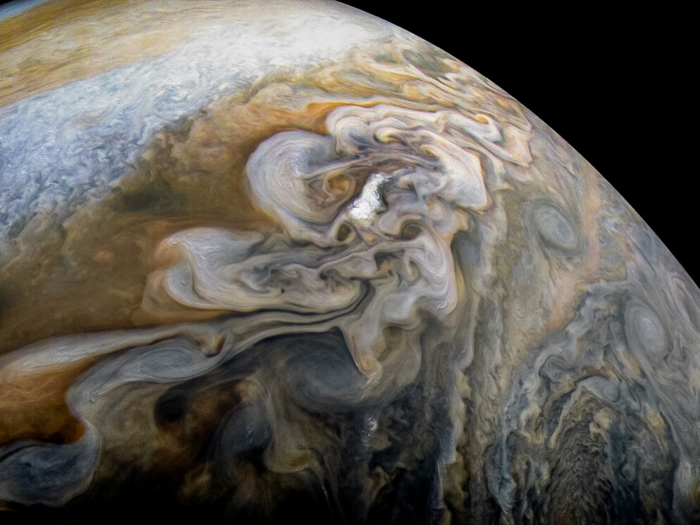
Source: Business Insider
Photos of the Great Red Spot have been a favorite among Juno fans. The storm could easily swallow Earth, and the probe photographed it twice — once in July 2017 and again in April 2018.
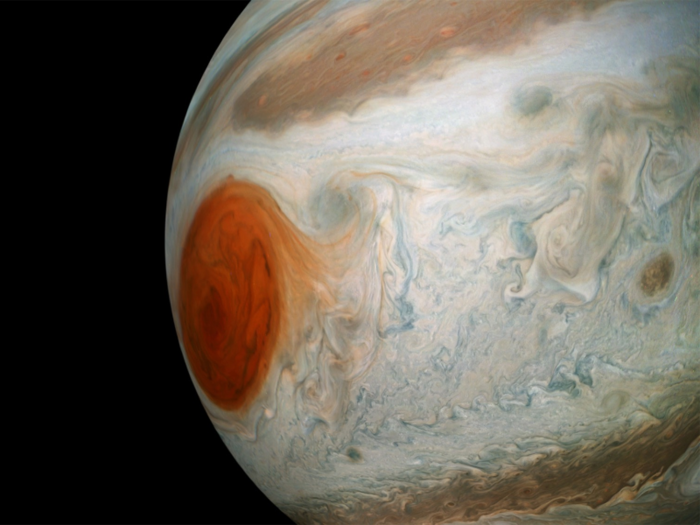
Source: Business Insider
This stunning image is actually a blend of several photos captured by Juno. The image may be one of the last we get of the Spot — although the storm has lasted for centuries, it could vanish within a few decades.
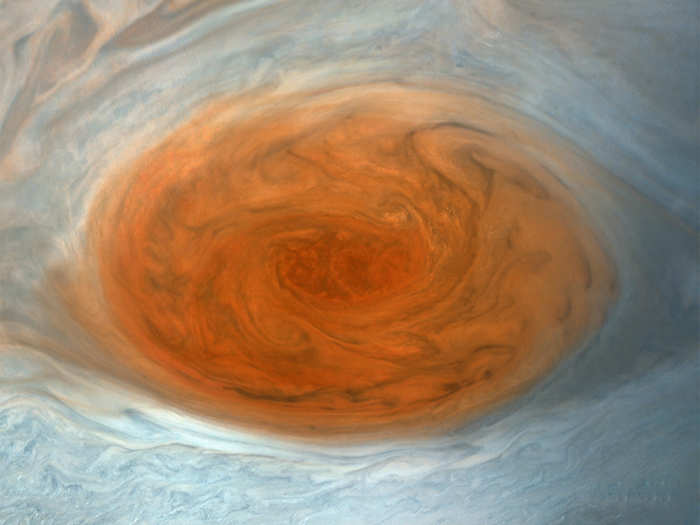
Lesser-known storm cells, many of which don't have evocative names because they're so short-lived, also swirl about Jupiter.
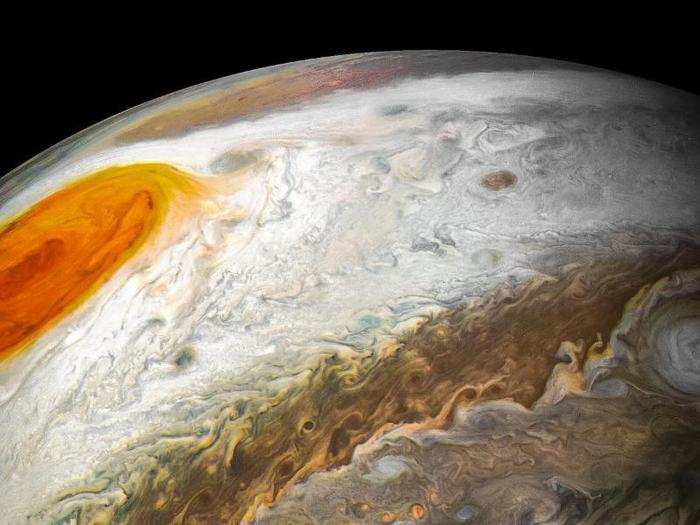
Source: Business Insider
Scientists who study Jupiter call this nearly Earth-size storm "anticyclonic white oval WS-4."
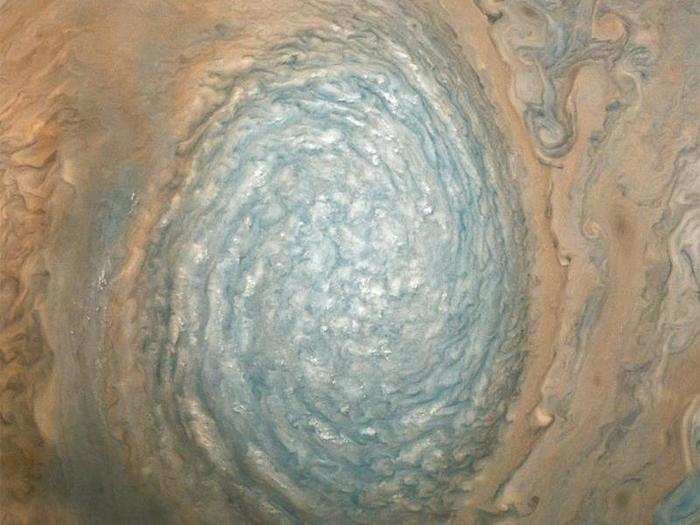
Source: Business Insider
Many storms in Jupiter form bands and patterns that are as hallucinogenic as they are beautiful.
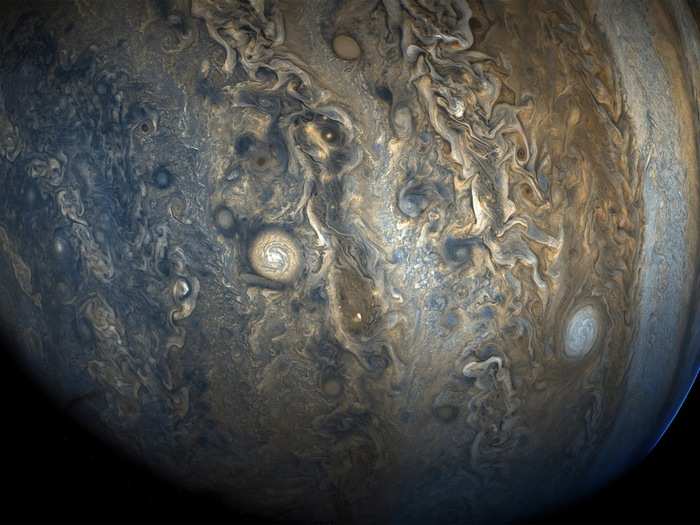
Source: Business Insider
Interpretive color processing of JunoCam data sometimes makes its storms take on striking blue colors.
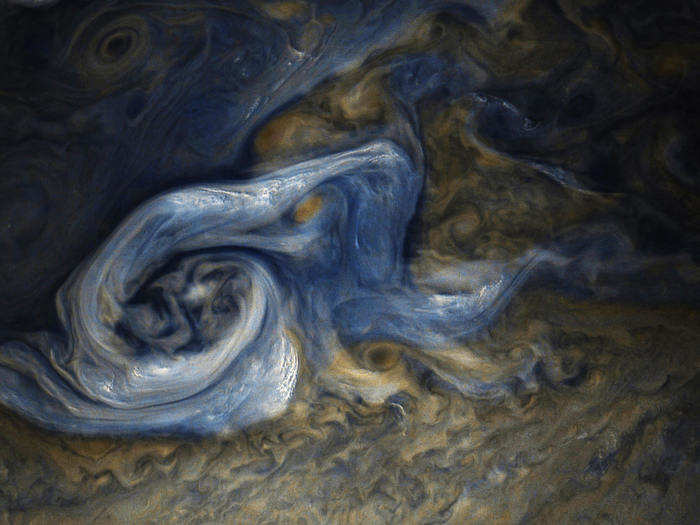
Source: Business Insider
Other bands create powerful chevrons that punch through cloud layers. The storm at the center of this image is many times larger than a hurricane on Earth.
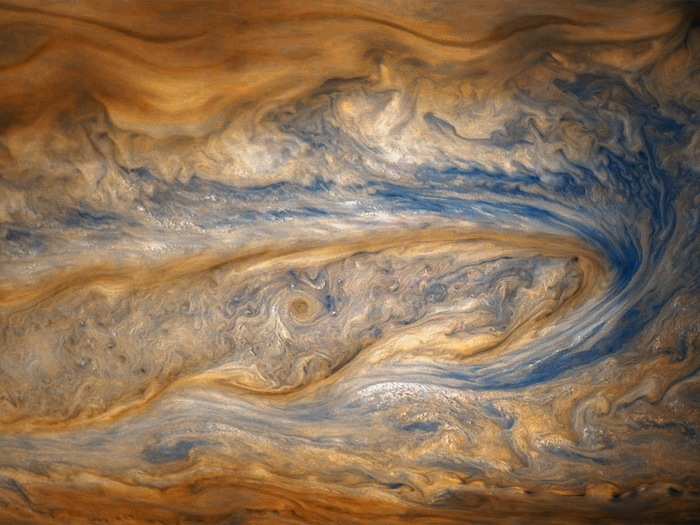
Source: Business Insider
NASA described this image showing a mess of storms as a "mind-bending, color-enhanced view of the planet’s tumultuous atmosphere" in a January 2018 release.
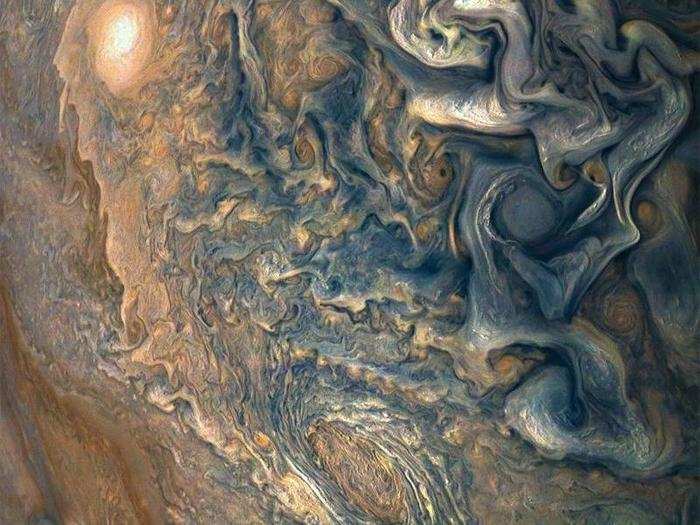
Sources: NASA, Business Insider
Jupiter's collections of storms grow more chaotic toward each of its poles.
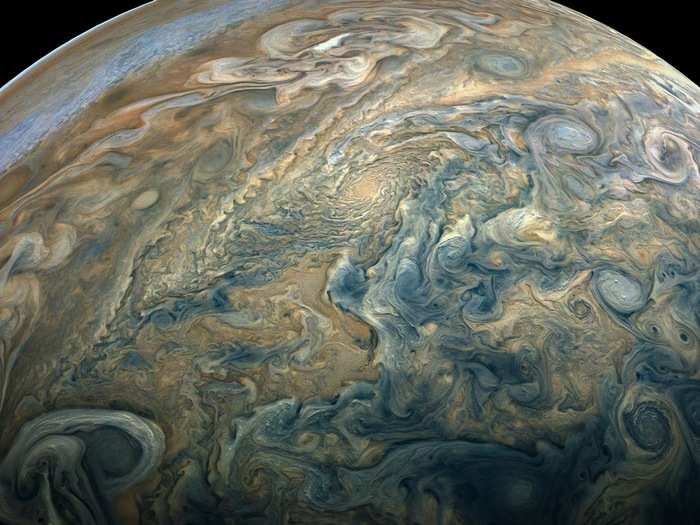
Source: Business Insider
The poles are regions that planetary scientists had only dreamed of seeing until a few years ago, thanks to Juno's daredevil orbits.
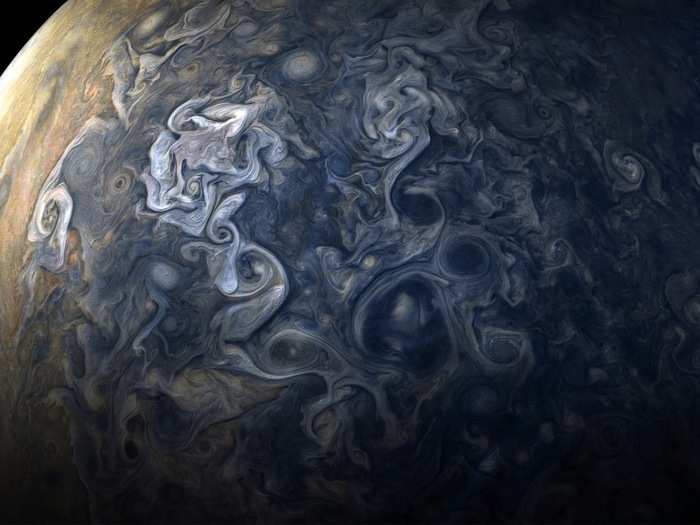
Source: Business Insider
This oddly symmetrical image of Jupiter's north pole was made using a combination of photos from Juno's first, third, fourth, and fifth perijoves. It also uses images from the probe's aurora-mapping instrument, called JIRAM.
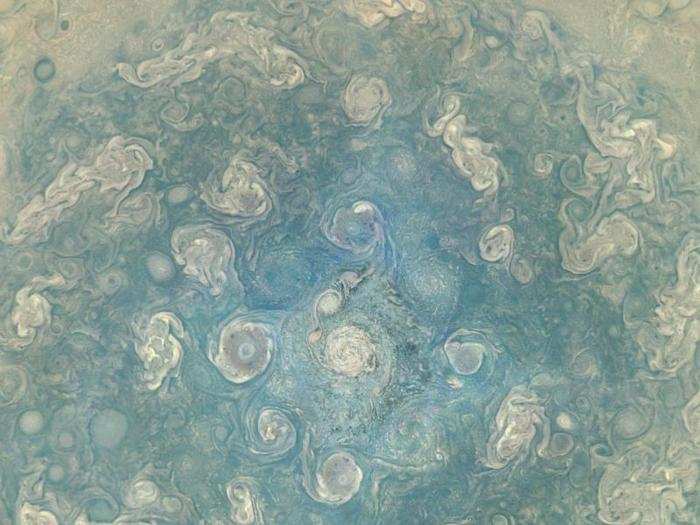
Source: Business Insider
JIRAM scans Jupiter for temperature variations and electrical activity that are invisible to JunoCam.

Sources: Business Insider, NASAJuno/YouTube
Researchers have used the data to model the planet's storm-choked north pole in 3D.
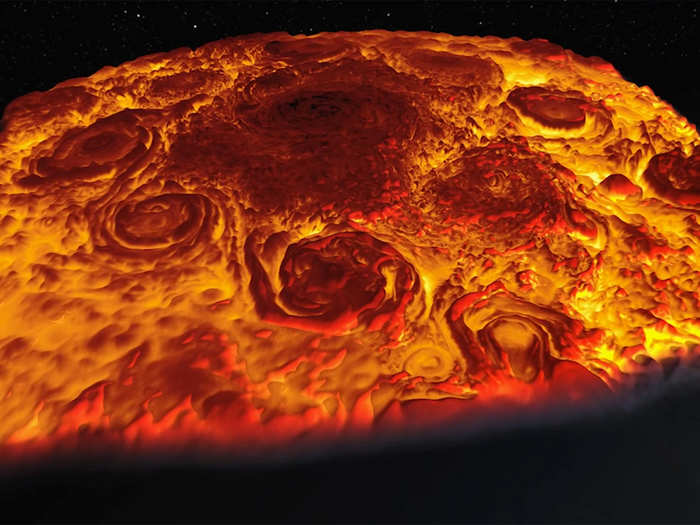
Source: Business Insider
Juno has completed 12 of the 14 total orbits scheduled for its first mission — the final two will happen on May 24 and July 16. But even with an extension and a new mission, the probe won't last forever.
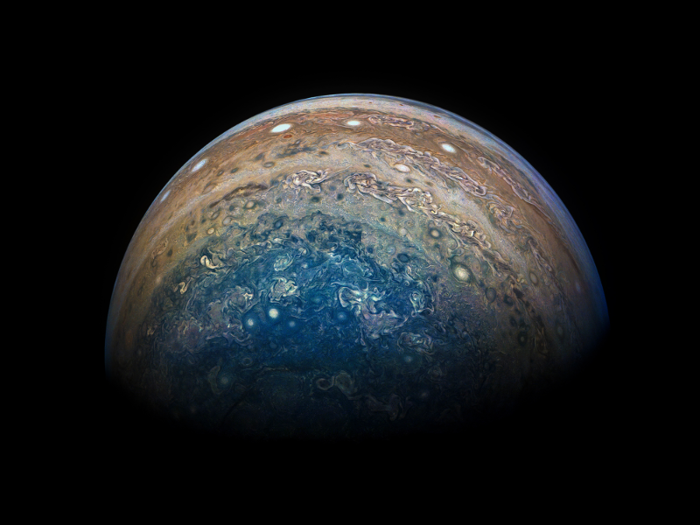
Source: Business Insider
NASA will eventually plunge Juno into the clouds of Jupiter to destroy it, thereby eliminating the possibility that it could crash into one of the planet's icy, ocean-hiding moons.
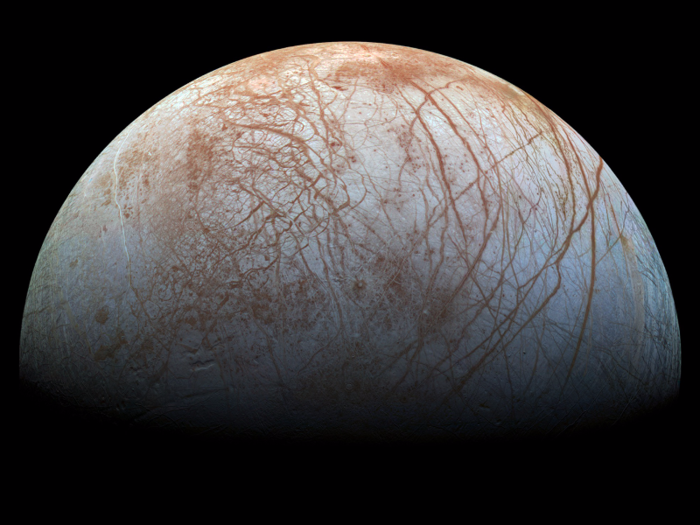
Source: Business Insider
It's important to avoid contaminating the subsurface oceans of Europa, Ganymede, and the other moons with bacteria from Earth — as well as any alien life that may exist beneath the ice.
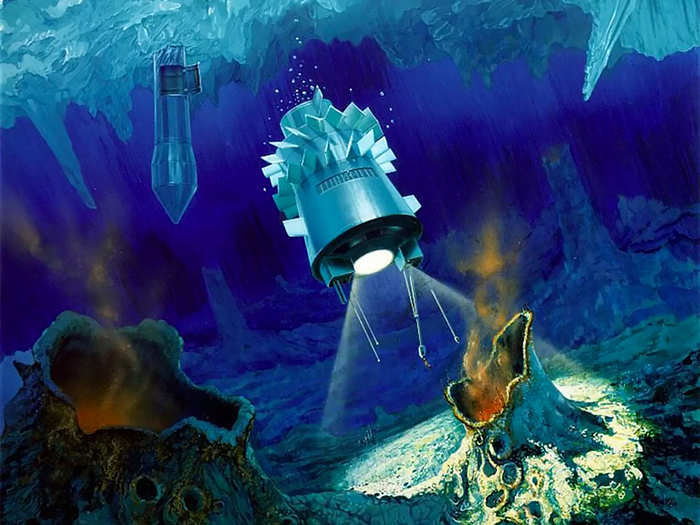
Source: Business Insider
Popular Right Now
Advertisement
